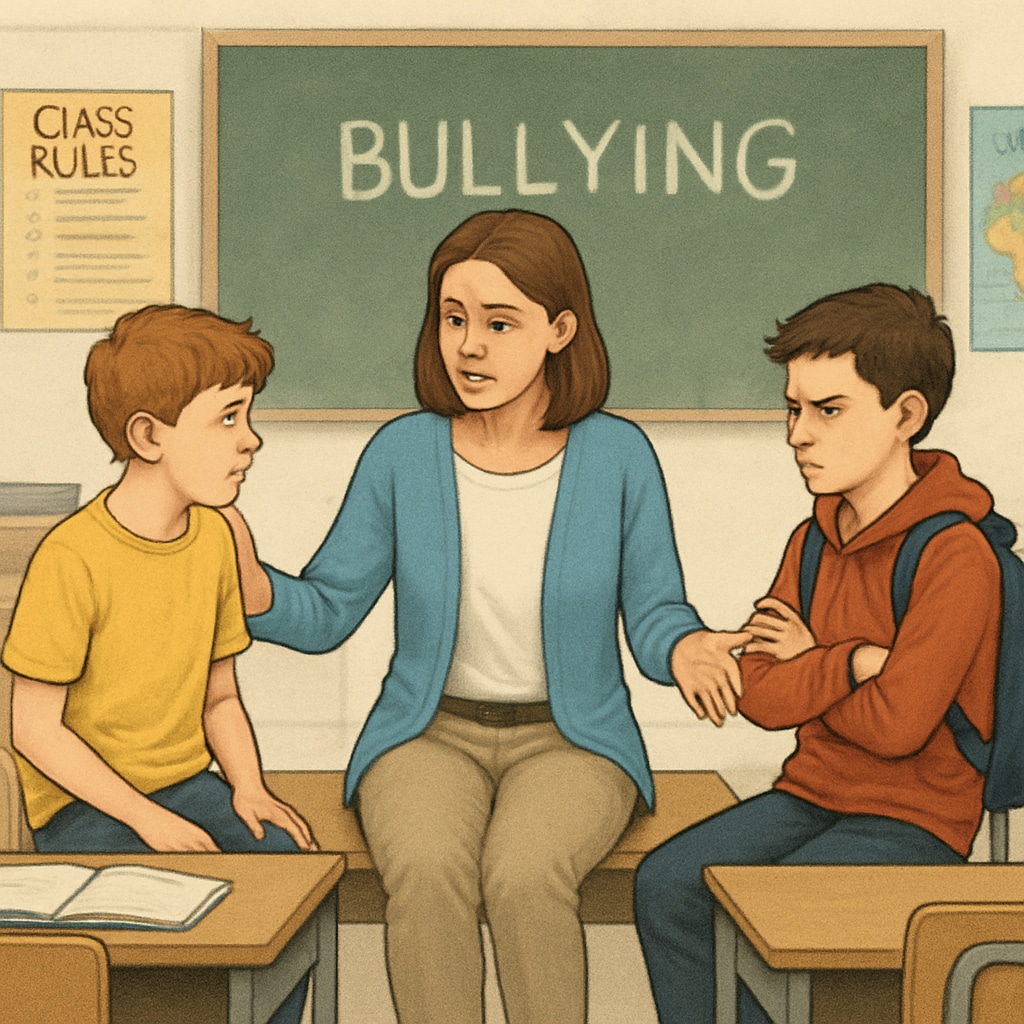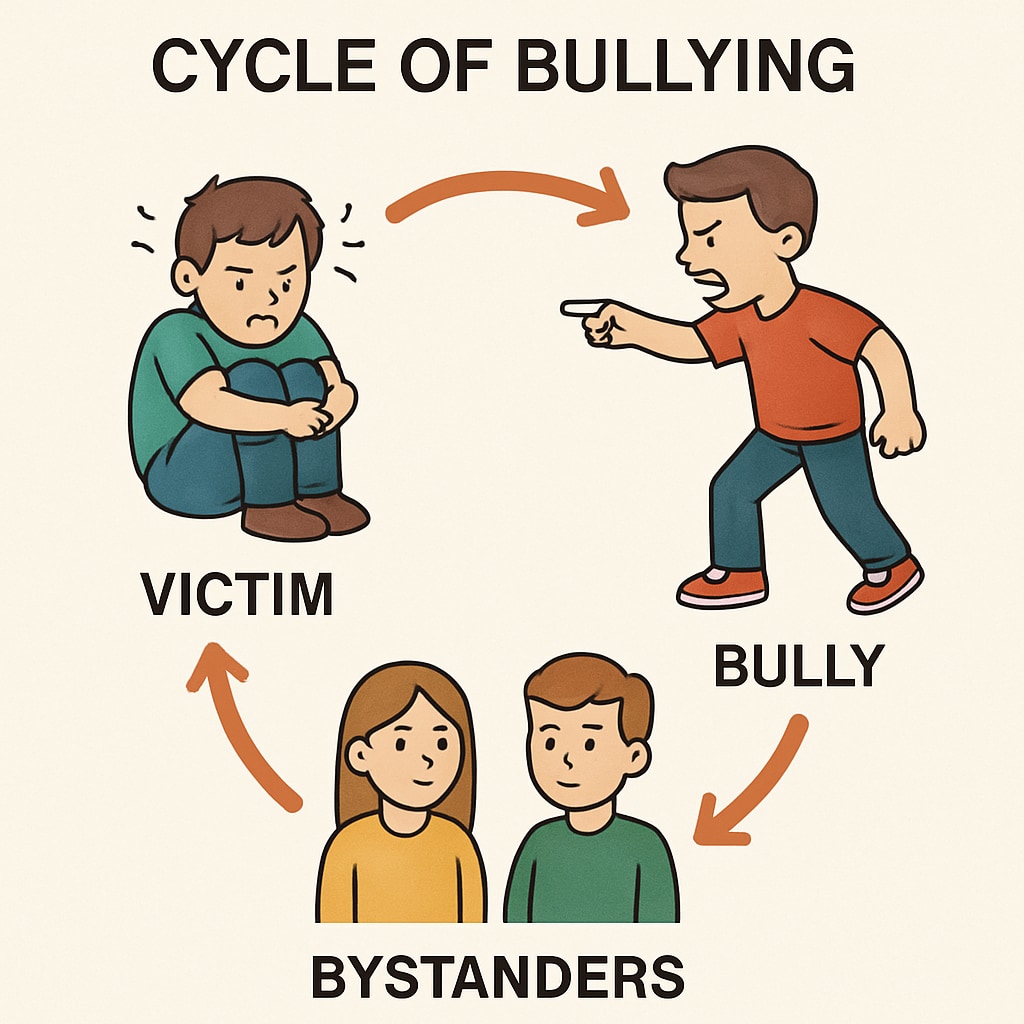School bullying, its consequences, and measures for addressing it are significant concerns in contemporary K12 education. Bullying not only undermines students’ emotional and academic development, but also disrupts the overall safety and harmony of school environments. This article delves into the critical components of defining bullying behavior, its far-reaching impacts, and a comprehensive, ideal framework for addressing it. By integrating prevention, education, and restorative practices, educators and parents can foster a safer, more inclusive space for all students.
Defining School Bullying: Key Characteristics and Behaviors
Before addressing bullying, it is crucial to establish a clear definition. According to Wikipedia’s entry on school bullying, it involves repeated aggressive behavior intended to harm or intimidate a victim perceived as vulnerable. Key characteristics include:
- Intentionality: The perpetrator aims to cause harm, whether physically, emotionally, or socially.
- Repetition: Bullying occurs repeatedly over time, distinguishing it from isolated incidents.
- Power Imbalance: The bully exploits perceived differences in power, such as physical strength, social status, or emotional resilience.
Understanding these traits helps educators and parents differentiate bullying from other conflicts. Clarity in identifying bullying is fundamental for implementing appropriate interventions.

Consequences of Bullying: Emotional, Academic, and Social Impacts
The consequences of school bullying extend far beyond immediate distress. Victims, perpetrators, and even bystanders can experience long-term effects. For victims, bullying can lead to:
- Emotional distress: Anxiety, depression, and low self-esteem are common outcomes.
- Academic struggles: Fear and stress may hinder focus and participation in school activities.
- Social withdrawal: Victims may isolate themselves, fearing further harassment.
Similarly, bullies themselves may face adverse consequences, including an increased likelihood of engaging in antisocial behavior later in life. Bystanders, too, can experience guilt and helplessness, impacting their mental well-being.
For more details on these outcomes, Britannica’s analysis of bullying offers valuable insights.

Ideal Strategies for Preventing and Addressing School Bullying
Combating school bullying requires a holistic approach that balances prevention, education, and restorative measures. Below is a framework for an ideal solution:
1. Proactive Prevention Strategies
- Anti-bullying policies: Clear guidelines defining unacceptable behaviors and their consequences.
- Awareness campaigns: School-wide initiatives to educate students, teachers, and parents about bullying and its impacts.
- Empowering bystanders: Encourage students to safely intervene or report bullying incidents.
2. Educational Programs
- Social-emotional learning: Teach empathy, conflict resolution, and emotional regulation.
- Role-playing exercises: Help students understand the perspectives of victims and bystanders.
- Teacher training: Equip educators with tools to identify and address bullying effectively.
3. Restorative Practices
- Mediation sessions: Facilitate open dialogues between victims and perpetrators to address harm.
- Counseling services: Provide support for all parties involved, including bystanders.
- Community involvement: Engage parents, community leaders, and local organizations in creating a united front against bullying.
Creating a Culture of Respect and Inclusion
Ultimately, the most effective way to combat school bullying is to foster a culture of respect and inclusion. Schools should prioritize creating environments where diversity is celebrated, and differences are embraced. Teachers and administrators must lead by example, demonstrating empathy and fairness in their interactions.
By implementing these approaches, educators and parents can work collaboratively to address the root causes of bullying and mitigate its harmful effects. A safe and inclusive educational environment ensures that every child has the opportunity to thrive, both academically and personally.
Readability guidance: Short paragraphs, bullet points, and clear transitions ensure accessibility for a broad audience. The focus remains on practical solutions, supported by authoritative sources and well-placed illustrations.


